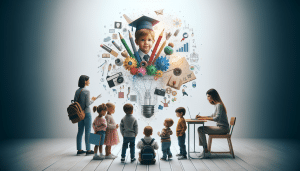Remote Learning Success Stories You Haven’t Heard
Oliver Cooper September 17, 2025
Dive into the world of remote learning and uncover how real students and educators have achieved unexpected breakthroughs. This article examines digital education platforms, strategies for student engagement, and key social impacts of learning remotely.
Remote Learning and Its Surprising Impact
The shift to online classes has changed the traditional classroom experience in remarkable ways. For many learners, virtual education platforms are providing flexible study options and a wider curriculum than ever before. Students can participate in advanced placement, creative writing, and even STEM courses from distant locations, allowing them to tailor their academic experience. This newfound digital access, when supported properly, can improve educational outcomes and help narrow previous equity gaps, especially for rural or underserved communities. Exploring stories from diverse backgrounds, it’s clear some students thrive in this format thanks to customized pacing and targeted academic support.
Online learning success is influenced by several factors, including teacher presence, interactive content, and structured feedback. The most effective digital platforms use multimedia resources, quizzes, and peer chat features to encourage active participation. Some schools have even leveraged mobile apps to bridge technical divides, ensuring everyone has a chance to join class discussions or submit assignments. As digital infrastructure expands, the positive stories continue—students discover new academic interests, and teachers report increased engagement from previously quiet classrooms. Social learning has shifted but not vanished; group projects and mentorships find new life on video calls and interactive boards.
Despite early challenges, many educators have adapted by integrating educational technology training into their daily routine. Participating in virtual professional development, teachers boost their confidence and digital fluency, which translates into stronger support for students at all levels. Some schools rely on dedicated online counselors and tutors who follow up with learners who may need extra help. Enhanced parental communication tools also help entire families stay informed and involved. These collective efforts make remote learning success possible for more students, fostering resilience and flexibility in today’s changing educational landscape.
Key Factors Driving Effective Remote Education
Remote learning requires a strong connection between students, teachers, and families. Interactive learning environments rely on a mix of synchronous (live) and asynchronous (self-paced) activities. When lessons include real-time video, instant polls, and collaborative whiteboards, participation rises sharply. Flexible scheduling means that students can adapt work or family commitments around school. According to educational research, self-directed online study hones important life skills, such as time management and goal-setting, which are critical beyond graduation.https://www.ed.gov
Empowering teachers with digital resources goes a long way. Professional development on online tools ensures lessons remain engaging, even at a distance. Live group discussions, digital labs, and breakout rooms mimic in-person collaboration. Programs that emphasize equity lend devices or internet access to students in need, closing the digital divide. Providing clear expectations and emotional support through regular check-ins boosts academic achievement and reduces drop-out risk in online environments.
The use of data analytics in remote classrooms is another emerging trend. Teachers can track learning progress in real time and identify where additional guidance is needed. Early intervention strategies, bolstered with digital support, allow for a targeted approach. Many digital education platforms offer dashboards that highlight strengths, weaknesses, and progress for individual learners, making instruction more responsive and personalized.
Student Engagement Strategies That Make a Difference
Capturing student interest requires more than just livestreamed lectures. Gamification—like awarding badges, points, or progress bars for completing academic milestones—increases motivation. Encouraging students to contribute to digital forums allows for thoughtful expression and authentic peer-to-peer learning. Students who feel active in their digital classroom are more likely to complete assignments and report higher satisfaction with the remote experience.https://www.learningpolicyinstitute.org
Creative projects and virtual field trips transform abstract lessons into lived experiences. For example, students might use free online museums, language exchange programs, or STEM simulators as part of their curriculum. These resources are often available at little or no cost and reduce barriers for students who may not have resources for extracurricular enrichment. As the digital learning ecosystem grows, students around the globe gain exposure to content and perspectives not previously possible in traditional settings.
Student voices are central in successful online programs. Many platforms offer feedback sessions, chat surveys, and office hours for input. Institutions that listen adapt faster; new features and content are added based on what students actually request. Peer mentoring, where older students guide newcomers, helps foster a sense of belonging even when learning remotely. All these strategies work together to build a supportive, interactive digital community.
Overcoming Common Challenges in Remote Learning
While the benefits of remote education are apparent, challenges persist. Access to reliable high-speed internet remains a major hurdle for some families. Schools address this by providing Wi-Fi hotspots or distributing mobile data vouchers. User-friendly platforms are also critical; tech support teams are on hand during virtual school hours to troubleshoot login issues or glitches. These practical measures help reduce frustration and ensure consistent participation. https://www.pewresearch.org/internet/2021/09/01/the-internet-and-education-in-the-u-s
Another frequently cited concern is screen time. Parents and educators worry that prolonged device usage could impact health. To address this, many programs now schedule regular ‘offline’ breaks, outdoor assignments, or mindfulness activities. Students are encouraged to balance digital lessons with hands-on projects, physical activity, and personal reading. By blending screen and nonscreen activities, schools protect students’ well-being and foster holistic growth.
For students with special needs or English-language learners, remote learning brings unique challenges. However, assistive technologies, captioned videos, and AI-powered translation tools help many overcome barriers. Schools also allot extra one-on-one time with support staff or provide alternate assignments tailored to individual needs. Flexible deadlines and frequent check-ins promote an inclusive environment and reduce stress for all students and caregivers.
Social and Emotional Impacts of Digital Classrooms
Remote learning’s effect on social development is mixed, but innovative approaches boost outcomes. Virtual clubs, interest-based chats, and ‘camera-on’ advisory sessions help keep students connected. Extracurricular activities have moved online as well, allowing young people to collaborate on art, music, debate, and gaming. Social-emotional learning programs are sometimes integrated into the daily schedule, teaching healthy communication and self-regulation.https://www.casel.org
Family engagement is another key element. Regular digital newsletters, parent conferences, and progress apps strengthen the school-home partnership. When families receive timely updates about both academic content and well-being, students feel more supported. By cultivating a sense of community, remote schools mirror many benefits traditionally associated with in-person education and help students navigate transitions with confidence.
Maintaining motivation in an online environment isn’t always easy. That’s why successful programs focus on building resilience, adaptability, and purpose. Counselors train in virtual tools to meet students where they are—be it through telehealth, group chats, or digital check-ins. This holistic approach helps students remain connected, confident, and ready for future academic or personal challenges. Such support can be especially valuable during periods of uncertainty.
The Future of Remote Learning: Evolving Possibilities
The landscape of online education is rapidly changing. Hybrid models that blend in-person and digital learning are increasingly common, capitalizing on the strengths of both settings. With the growing sophistication of educational technology, adaptive modules and AI-driven tutoring promise a more personalized experience. Researchers and institutions continue to study which approaches yield the highest retention and satisfaction rates, leading to ongoing improvements.https://www.edweek.org
International collaborations are also on the rise. Virtual exchange programs connect students worldwide, fostering cross-cultural understanding. This prepares young people for global workplaces and diverse communities. Educators increasingly share content, assessments, and teacher training resources across borders, raising the overall quality of digital education everywhere. As more policies and investments support online learning, its impact will only continue to grow.
Ultimately, success stories from remote classrooms show that technology, when used thoughtfully, can help make education more inclusive and adaptable. Continuous innovation, family engagement, and a willingness to address challenges head-on are key. As communities invest in these areas, digital learning will evolve, offering practical opportunities for lifelong learning and development. Explore more as this dynamic field shapes the future of education.
References
1. U.S. Department of Education. (n.d.). Reimagining the Role of Technology in Education. Retrieved from https://tech.ed.gov/files/2017/01/NETP17.pdf
2. Learning Policy Institute. (n.d.). Effective Practices for Online Teaching. Retrieved from https://www.learningpolicyinstitute.org/product/effective-online-teaching-practices
3. Pew Research Center. (2021). The Internet and Education in the U.S. Retrieved from https://www.pewresearch.org/internet/2021/09/01/the-internet-and-education-in-the-u-s
4. CASEL. (n.d.). Social and Emotional Learning (SEL) in Digital Classrooms. Retrieved from https://www.casel.org/sel-in-digital-classrooms
5. Education Week. (n.d.). The Future of Remote Learning. Retrieved from https://www.edweek.org/technology/the-future-of-remote-learning
6. International Society for Technology in Education. (n.d.). Digital Learning Strategies. Retrieved from https://www.iste.org/standards/for-educators/digital-age-learning







